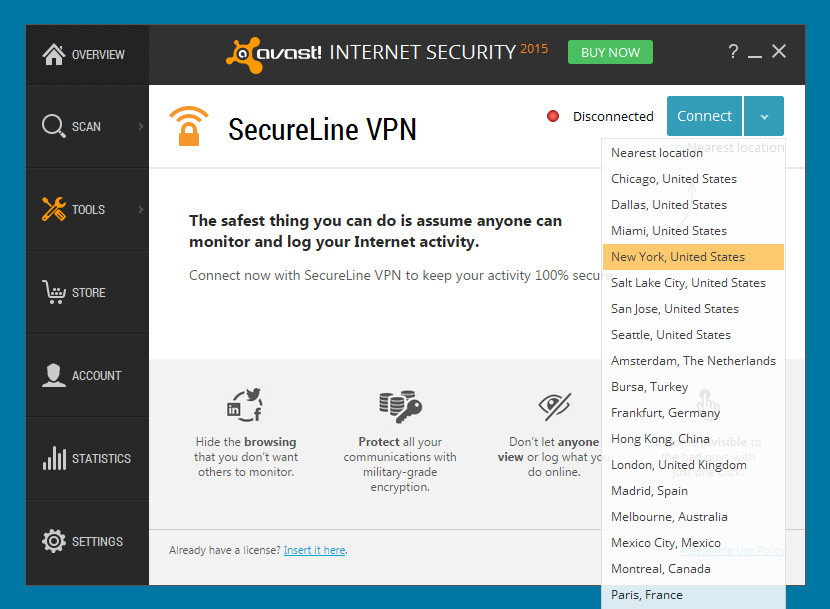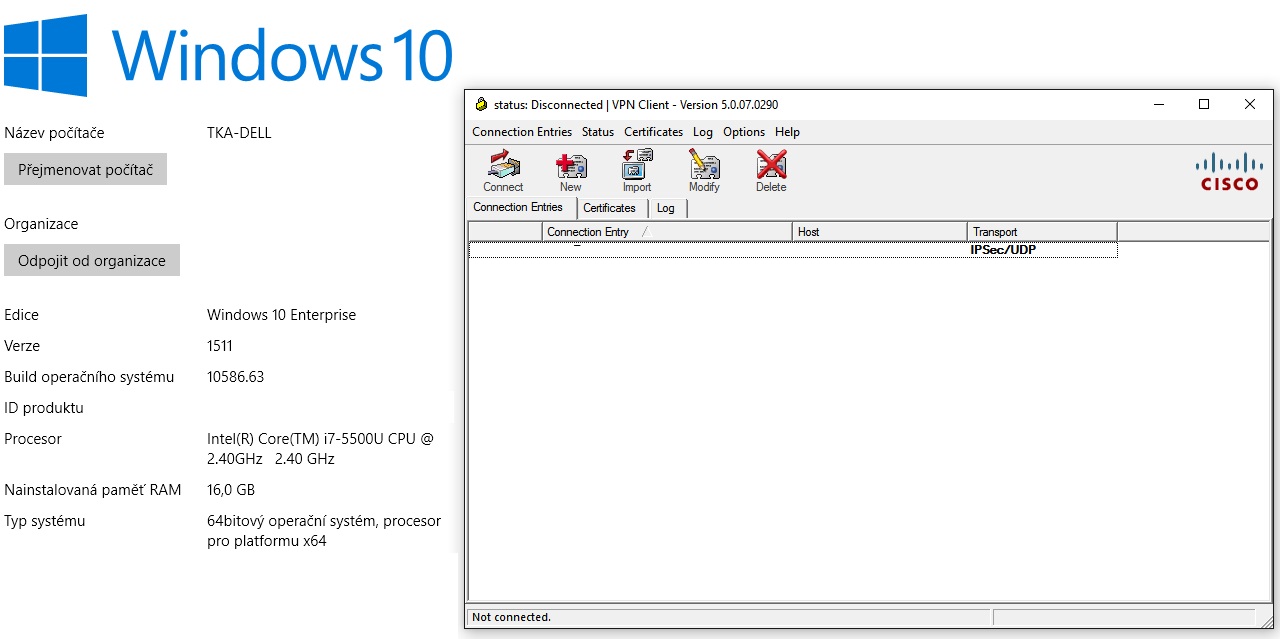More about Windows
- Cisco 64 Bit Vpn Client Download Windows 10
- Cisco Vpn Client Linux 64 Bit Download
- Cisco Vpn Client 32bit

Cisco 64 Bit Vpn Client Download Windows 10
For mobile professionals and those wishing to secure their remote connections while away from the office or over unsecured networks, such as the internet, nothing compares to virtual private networking (VPN) connections.
VPN access is used (and should continue to be enforced) as a means of protecting connections made remotely from a client to a network by tunneling the connection between the two endpoints and encrypting all that is sent or received. An additional layer of security is included by requiring authorized users to authenticate themselves so that access to data is strictly controlled via a centralized database, such as Active Directory.
Good day to all! Where can i download cisco vpn client for windows 10 x64? Give some information about Cisco VPN Client supports for windows, please? Has anybody been able to install Cisco VPN client 5.0.04 on Windows 7 64-bit? Skip to main content. Free downloads & security; Education; Store locations. Site Feedback. Tell us about your experience with our site. RussdScott Created on March 12, 2009. Cisco VPN client on 64-bit has anybody been. Nov 19, 2013 - I do not think Cisco has a 64bit IPSec VPN client. I think people have. You should not download Cisco software from anywhere but from Cisco.
SEE: How to set up Windows 10 on the Raspberry Pi
While VPN clients come from many vendors, Cisco's venerable Cisco VPN Client v5 was commonly used to communicate with Cisco routers and provide one-stop connectivity to company resources. However, it reached end-of-life (EOL) in July 2016 and is no longer supported by Cisco in lieu of the Cisco AnyConnect Secure Mobility Client v4.
The EOL designation for the Cisco VPN Client v5.0.07.0440—the most recent and stable version—means that newer operating systems, like Windows 10, are not officially supported by the client. This renders many enterprise businesses and educational institutions without VPN support until they upgrade to the AnyConnect suite.
Luckily, a workaround exists to allow the Cisco VPN Client application to function on Windows 10 and other 64-bit versions of Windows until your organization is ready to migrate to a newer VPN platform. Let's review the requirements first:
- PC running Windows 10
- Cisco VPN Client v5.0.07.0440 (check with your network administrator)
- Administrative credentials
Armed with the tools we need, let's follow the steps necessary to install and configure the VPN client on Windows 10.
- If a previous version of Cisco's VPN Client is currently installed on the workstation, uninstall it and reboot the node.
- Install the Citrix DNE Update software that matches your computer's architecture—32- or 64-bit.
- Install Cisco VPN Client v5.0.07.0440 and reboot your desktop after completing the installation, if prompted.
- Launch Regedit.exe. (NOTE: The Windows Registry file is vital to the operation of the Windows operating system. Incorrectly editing or otherwise corrupting the Windows Registry file could prevent your computer from booting properly.) Navigate to the following location to modify the entry necessary to enable the VPN client within Windows 10:
HKEY_LOCAL_MACHINESYSTEMCurrentControlSetServicesCVirtA - Find the Display Name key and double-click it to edit the entry. Change it from:
'@oem8.ifn,%CVirtA_Desc%;Cisco Systems VPN Adapter'
to:
'Cisco Systems VPN Adapter' - Exit the Registry Editor and launch the Cisco VPN Client software. Configure the application as needed to communicate with your organization's VPN server and test the connection. If the connection fails and you are using a 64-bit version of Windows 10, go back to step #5 and edit the Registry entry to Cisco Systems VPN Adapter for 64-bit Windows. Then, retry establishing a connection.
These steps apply to all current versions of Windows 10, including version 1607, otherwise known as the Windows 10 Anniversary Update.
One caveat: If you haven't upgraded to Anniversary Edition, updating to that version will break the Cisco VPN Client and you will need to fix the installation—or better yet, follow the preceding steps again to correct the problem.
Also, from time to time, Windows 10 may flag the application as unsupported and disable the service. Simply launch Services.msc and find the service entry titled Cisco Systems, Inc. VPN Service. Then right-click the service and select Start from the context menu to reenable the service and allow it to work in the background, as needed.
Microsoft Weekly Newsletter
Be your company's Microsoft insider with the help of these Windows and Office tutorials and our experts' analyses of Microsoft's enterprise products. Delivered Mondays and Wednesdays
Sign up today Sign up todayAlso read...
- Windows 10: The smart person's guide (Updated)
Your thoughts

Have you run into problems since Cisco stopped supporting VPN Client v5? What approach have you taken to managing your VPN needs? Share your experiences and advice with fellow TechRepublic members.
Having been discontinued back in 2011, it shouldn’t come as a shock that the Cisco VPN client isn’t supported by Windows 10. In fact, you would be lucky to get it working with Windows 8.1 since Cisco itself has stated in the past that the last supported operating system for its VPN client was Windows 7.
Nevertheless, there is a well-known, but somewhat vexatious, workaround that will get the client working on up to the Windows 10 Creators Update released back in the spring. It hasn’t been confirmed whether this loophole will work stably with the latest Windows 10 Fall Creators Update, released earlier this year, though, so your best bet is to avoid updating for now in this case.
- Here are 7 good reasons why a VPN isn't enough
Otherwise, you can do what Cisco itself recommends and download the Cisco AnyConnect Secure Mobility Client v4.x, which handles VPN functions in addition to offering a wide range of extra features such as malware protection. The problem is that some people don’t want all of the fluff and would rather keep on keepin’ on with their existing VPN client.
For those users, we suggest you follow this guide to its celebratory end to get the now-defunct Cisco VPN client working with a version of Microsoft’s desktop operating system that’s still regularly supported by its maker – namely Windows 10.
Installing the right programs
Okay, it’s time to get the Cisco VPN client up and running with Windows 10. We’ll restate this point just to make it doubly clear: this is only confirmed as working with builds up to version 15063 of Windows 10, or the Creators Update.
What’s more, it’s suggested that you uninstall the Cisco VPN client before you dare install Windows 10 Creators Update. If you don’t, you might wind up scrambling around for the proper registry files to delete before your system will let you install the product again using the MSI file we’ll discuss later on. So if you haven’t already, uninstall the Cisco VPN client now.
Now let’s download and install the SonicWall VPN client found here. In doing so, you’ll want to ensure the Windows executable you retrieve is the latest version of either the 32- or 64-bit client or it might not work as anticipated. After that, download the Cisco VPN client itself from Dropbox, but we couldn’t get a download to initiate from the latter (perhaps you’ll have more luck).
If you opt for the Dropbox route, make sure you select ‘Direct download’ rather than ‘Save to my Dropbox’. Note that you don’t have to sign up for a Dropbox account to access this file despite the web client prompting you to. In fact, you can continue to download the Windows executable installer without signing up for a new account or logging into an existing one.
With the EXE file downloaded, you’re going to have to make some changes before you can actually perform an installation of the Cisco VPN client. First off, you’re probably going to run into an error claiming that the file isn’t supported by your version of Windows.
To bypass this, unzip the file using file compression software like WinZip or 7-Zip and extract it to some place memorable like your desktop. Then, if you’re like us, you’ll encounter another issue: the freshly unzipped file will be an unopenable MST file, which luckily we have a stupidly easy fix for. Right click and change the MST portion of the file name to MSI – it’s that simple.
From there, double-click the newly converted vpnclient_setup.msi to finally begin the install wizardry. Click Next until you’re finished, then, as instructed, click Finish.
Cisco Vpn Client Linux 64 Bit Download
Editing the registry
Once you’ve made your way through the Cisco VPN client install wizard, it’s time to break out everyone’s favorite registry editor, namely Regedit. In Windows 10, you can access Regedit by typing it into the search bar (to the right of the Start button) or by using the shortcut Win + R and typing Regedit there. Whatever your preference, open Regedit.
Next – you guessed it – you’re going to make a quick registry edit. At one time, this step was optional, but since the Creators Update arrived, it’s pretty much mandatory in most cases.
With Regedit open, locate the registry key HKEY_LOCAL_MACHINE and click the drop-down icon. Then do this again for System, CurrentControlSet, Services, and finally, CVirtA.

From there, double-click DisplayName and change the value data to “Cisco Systems VPN Adapter” (without quotes) if you’re using the x86 32-bit version of the software or “Cisco Systems VPN Adapter for 64-bit Windows” (again, without quotes) if you’re on the 64-bit version.
For reference, the original value data entry should look like this:
32-bit (x86): @oem8.ifn,%CVirtA_Desc%;Cisco Systems VPN Adapter
64-bit (x64): @oem8.ifn,%CVirtA_Desc%;Cisco Systems VPN Adapter for 64-bit Windows
Once you’ve made the appropriate changes to your registry, restart Windows and you’re done.
The Cisco VPN client should now work as expected in Windows 10. However, if you’re continuing to run into trouble, we have a few extra steps you can take in the section below dedicated to troubleshooting.
- We’ve debunked 6 common myths concerning VPNs
Troubleshooting and post-installation
Cisco Vpn Client 32bit
If you’re still having trouble installing, running or using the Cisco VPN client with Windows 10, our best advice is to backtrack.
Most commonly, users will neglect to install the SonicWall client first, resulting in Error 433 when they try to connect. If this is happening to you, go back and install SonicWall prior to the Cisco VPN client, so that you have a DNE Lightweight filter ingrained in your system.
Once you’ve gone through and installed both programs – unzipping and renaming the Cisco VPN client installer in the process – edited the registry and rebooted your machine, you can go ahead and remove SonicWall in Settings > Add or remove programs, or in Control Panel > Programs > Programs and Features. Restart your computer again and the Cisco VPN client should still work.
If you’ve done everything in this guide (and in your power) to get the Cisco VPN client up and running in Windows 10 with no success, as a last resort you can reset all networking in Windows 10. This can be accomplished rather effortlessly.
First, run Command Prompt with administrative privileges by right-clicking it in the search bar and selecting “Run as administrator.” Then type “netcfg -d” (without quotes). Press enter. Reboot. That’s all there is to it.
If you’re still having issues, feel free to contact the author on Twitter and we’ll do what we can to help.
- We've also highlighted the best VPN services of 2019